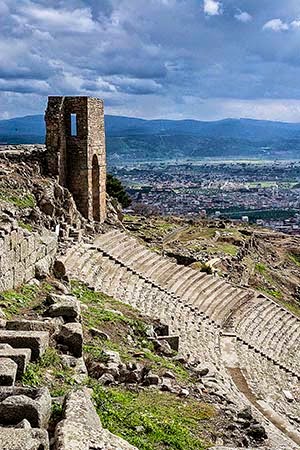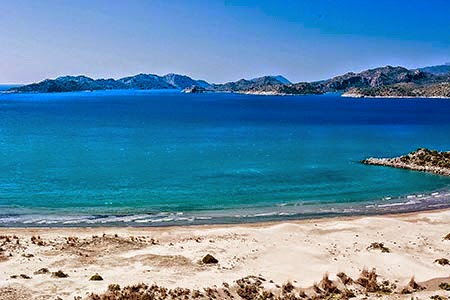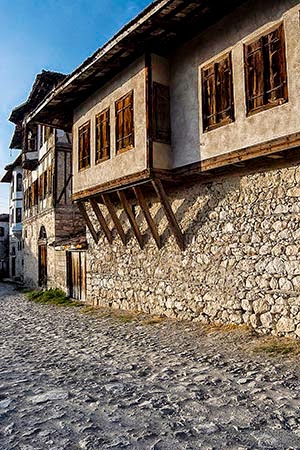See also related post Was the Fall of Rome Important?
 |
| Palazzo comes with canal |
Numerous
countries have a rich history of migrations and kingdoms. But in Turkey, there was the rise and fall of
not one but two great empires – Byzantine and Ottoman – that ironically ruled
almost the same expanse from Algeria to Iraq.
They also had a tremendous influence on trade – both in goods and ideas –
being the terminus of the Silk Routes from the Far East and South Asia and via Venice into
Europe.
Venice made a fortune sailing armies to the crusades. Their ship designs were so superior that their shipyards were classified top secret. As they gained success in the Crusades, Venezia asserted its power.
Fall of Byzantine Empire
The Fourth Crusade was supposed to re-take Jerusalem. At a huge cost, the Venetians built extra ships to transport of a huge army. However, the crusading kingdoms did not pay the agreed amount. Meanwhile there was a coup in Byzantium. The Venetians agreed to help overthrow the usurper. But they really wanted to recoup the costs of their ships.
 |
| Not Egyptian, not Obelisk |
So in 1204, Venice led the crusaders to the largest and most sophisticated city in Christendom. The crusaders obliged with the Sack of Constantinople. Today, almost nothing is left of the centre of the capital. One of the few remaining monuments is the 32 m high Walled Obelisk that marked one end of the spine of an oval racing track. If looks like blah today, consider that it once was lined with gilded bronze plaques with friezes. The crusaders stole everything but the blocks.
Another tremendous treasure stolen by the Venetians was the Pala d’Oro. This Byzantine gold altar screen is decorated with just a few gems — 1,300 pearls, 300 emeralds, 300 sapphires ... just to mention a few! It was commissioned from Byzantine goldsmiths in 976.
 |
| Races and Riots |
Also gone are the four famous 4th century BC Greek (now considered Roman) gilded "bronze" horses. Appropriately, the four life-sized horses were depicted pulling a quadriga (chariot) on top of the boxes where the nobility sat. They were very symbolic considering that this was the premiere horseracing arena. The Hippodrome racetrack is where the Nika Riots led to the execution of 30,000 people.
Very little is left of the Hippodrome today and you can appreciate why it is overlooked by guidebooks and tourists alike. You have to travel to Venice to see one of the few remnants. The gilded horses were transported by ship and placed above the porch of Basilica San Marco. If you look at the photo carefully, you can see the proud horses, which have since been moved indoors into a museum.
Also gone are the four famous 4th century BC Greek (now considered Roman) gilded "bronze" horses. Appropriately, the four life-sized horses were depicted pulling a quadriga (chariot) on top of the boxes where the nobility sat. They were very symbolic considering that this was the premiere horseracing arena. The Hippodrome racetrack is where the Nika Riots led to the execution of 30,000 people.
 |
| Race Horses on Basilica San Marco |
Very little is left of the Hippodrome today and you can appreciate why it is overlooked by guidebooks and tourists alike. You have to travel to Venice to see one of the few remnants. The gilded horses were transported by ship and placed above the porch of Basilica San Marco. If you look at the photo carefully, you can see the proud horses, which have since been moved indoors into a museum.
Rise of the Venetian Empire
Venetians seriously considered themselves the protectors of one quarter of the Roman Empire. Thus while Europe embraced the Gothic style, Venezia developed its own Venetian-Byzantine style. Spoils of the Sack were strewn around the Piazza San Marco and thus visible as one docked at the quay.
After 1204, Venice and Genoa became the main naval powers and seized most of the Byzantine land holdings in Italy, Dalmatian and Aegean Coasts.The first bank in the world was established in Venice in 1157. Modern banking started with merchant banks, which provided capital to companies in the form of share ownership instead of loans. Merchant banking progressed from financing trade on one’s own behalf to holding deposits for settlement of notes written by traders.
After 1204, Venice and Genoa became the main naval powers and seized most of the Byzantine land holdings in Italy, Dalmatian and Aegean Coasts.The first bank in the world was established in Venice in 1157. Modern banking started with merchant banks, which provided capital to companies in the form of share ownership instead of loans. Merchant banking progressed from financing trade on one’s own behalf to holding deposits for settlement of notes written by traders.
Transporting large sums of heavy metal money over long distances in the Middle Ages was neither secure not practical. So the merchant’s “benches” (banco in Italian) in the great grain markets became centres for holding money against a "bill" (nota). Our word “bank” is derived from the Italian word banco and bank note comes from "nota di banco". The first true banknotes were issued by Stockholms Banco.
 |
| Marco Polo on the 1000 Lira Bank Note |
 |
| Palazzo Ducale |
Venice was now a European power and had to have a palace to show off. Built in 1340, the Doge's Palace (Palazzo Ducale) housed not only the leader (duca) but also the government offices.
The Venetian architectural style is a fusion of both Byzantine, Islamic and Gothic elements. The Saracenic-Gothic arches added a distinctive Islamic
feel and break up what would be a boring, massive rectangular façade. Windows, arches and colonnades had the feel of lacework and made the palazzi feel light. The stone or marble frame around the main floor windows – used for the first time in the Gothic period to highlight the importance of these central windows – might have been borrowed from the Islamic alfiz.
The Doge's Palace is filled with art by Renaissance masters like Tintoretto, Titian, Tiepolo, Veronese, Bellini and Palladio. Did you notice that Italian artists are known by one name? – Like football stars today.
 |
| Saracenic Arches |
The Doge's Palace is filled with art by Renaissance masters like Tintoretto, Titian, Tiepolo, Veronese, Bellini and Palladio. Did you notice that Italian artists are known by one name? – Like football stars today.
 |
| Birth of Venus |
The Fall of Constantinople in 1453 was NOT the start of the Renaissance; it was the increase in the wealth of the city-states in Italy. It was aided by the decline in trust of the Church thanks to the Black Plague.
With their wealth resulting from domination of the silk trade with the east, the Venetian merchant class could put money into art and architecture.
Last Post: Birth of Venice Fall of Rome
Next Post: Fall of the Ottoman Empire









This comment has been removed by a blog administrator.
ReplyDelete